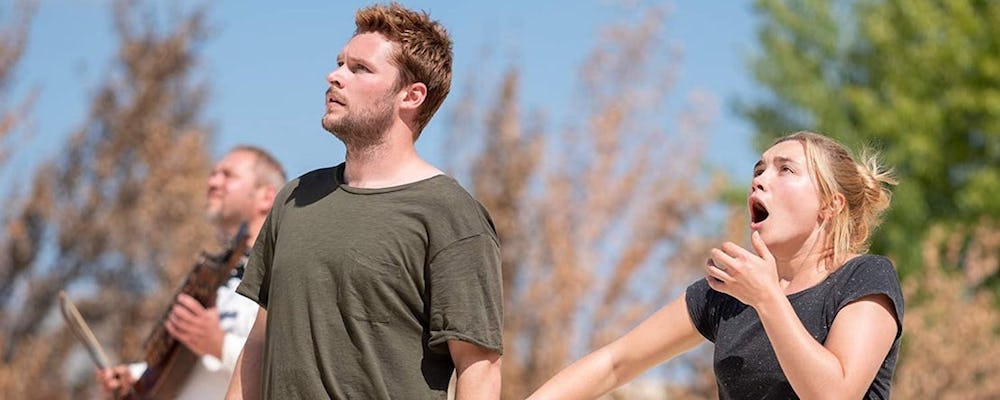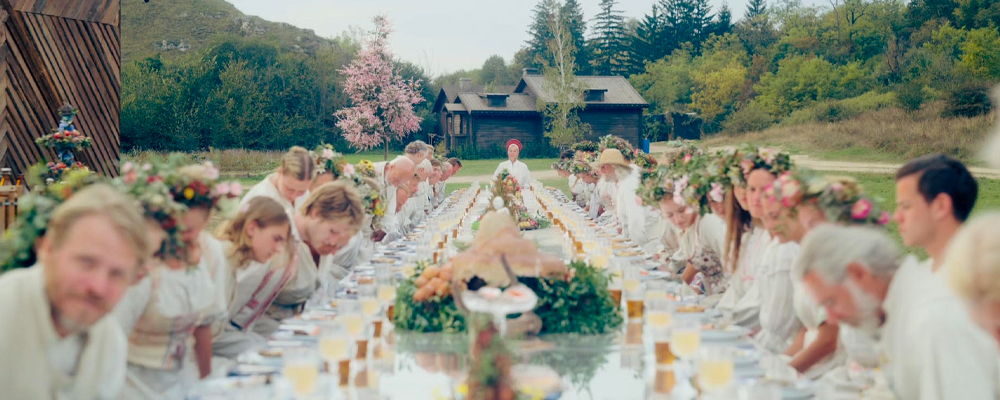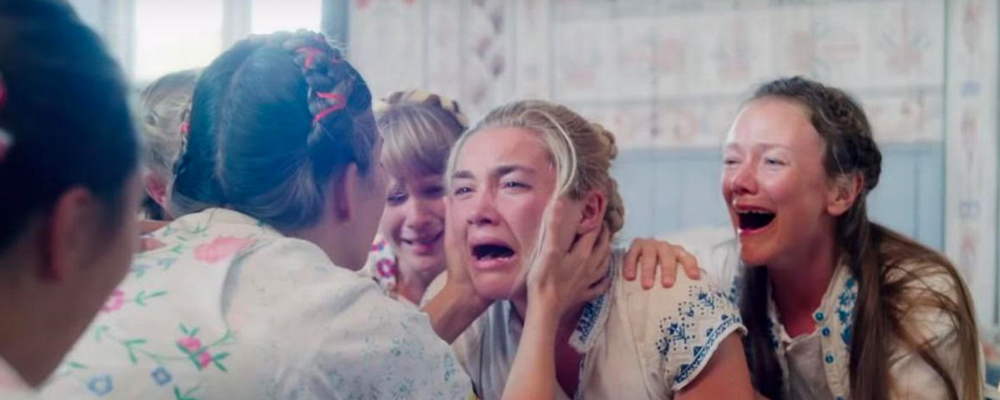The Psychological Horror of Ari Aster’s ‘Midsommar’ Will Burrow Into Your Dreams
Alci Rengifo
“Midsommar” is a pagan phantasmagoria, full of images that feel like a strange dream you just had last night. Director Ari Aster, who last year delivered the nightmarish “Hereditary,” again produces an ambiance of growing dread. What he does not do is repeat himself in terms of theme or narrative. Now more daring, he crafts a vision where cults, dark humor and eerie performances create the feeling of cinema as profane ritual. And still beneath all the madness there’s a clearer idea about being in a relationship that’s simply not good for you.
Graduate student Dani (Florence Pugh) has recently suffered a double trauma involving her parents and bipolar sister. Numbed, she finds little solace in her clueless boyfriend Christian (Jack Reynor), who is more invested in his buddies’ plans for a trip to Sweden. Christian’s friend Josh (William Jackson Harper) plans to do his thesis dissertation on the “midsommar” festival, in which locals celebrate the summer solstice. Their guide will be Swedish friend Pelle (Vilhelm Blomgren), who grew up in the communal rural village Hårga. Also tagging along is loudmouth doofus Mark (Will Poulter), who makes you wonder how some people get degrees. Feeling a bit ashamed because of his douchey attitude, Christian invites Dani along and she accepts. When they arrive in Hårga it is like entering another world. Pastoral and dreamy, the commune members in traditional Scandinavian attire seem welcoming and in touch with nature. Amid the endless fields, sumptuous drinks and wooden structures, Dani at first seems to find a necessary escape. But when the actual midsommar ritual begins, the friends discover this commune has a darker side, one where blood and sacrifice are not things of an ancient past, but of a frightening present.
What first absorbs about “Midsommar” is its enrapturing texture. Aster and cinematographer Pawel Pogorzelski, who shot “Hereditary” with a hellish eye, are not out to simply frighten us. Scenes are composed with a widescreen beauty reminiscent of Stanley Kubrick. The editing feels like a patient immersion into a pool of warm, sun-kissed imagery. Hårga is like a more rugged version of the isolated community in “The Wicker Man,” where inhabitants live by ritualized codes, sing folky hymnals and sleep surrounded by walls adorned with strange, pagan symbols. Aster will add detail to moments that elevate the sense of a world being created. There’s a fine subtly to visual humor, as when two of the traveling students will be having a conversation, and behind them we see women Hårganians crooning and swooning together. Dani is given drugs and the grass begins to sway differently, and as the trip grows in intensity Aster doesn’t go for full psychedelic color tricks. He instead uses such moments with a floating camera to transition into suspense or panic. Much of the art direction and even ensuing violence would be at home in Alejandro Jodorowsky films like “The Holy Mountain.” The music is by the fittingly-named The Haxan Cloak, and it is an orchestral firmament of sounds which creates a sense of unease or dreaminess. Even Aster’s casting enhances the mood, because he knows how to find the right faces, some which can convey attractiveness and others dark impulses. A deformed oracle, the product of incest, smears a sacred book with paint, and some of the women of Hårga are Nordic beauties, but beware.
Aster expands his visual but also narrative palette with impressive versatility. He could have just made another mad Satanic nightmare, instead what does is use the rural communal setting to deliver an original statement on toxic relationships. Christian is obviously no good for Dani, he’s not evil, just uncaring, but she clings to hope and follows him to this strange place. Soon Pelle seems to be edging suspiciously closer to Dani, using the excuse of relatability. When one of the Hårga girls casts an eye on Christian it happens just as Dani is beginning to find her place in the commune, helping with the cooking and participating in a folk dance ritual where a “queen” is crowned. Later there will be a ritualistic sex scene involving Christian both eerie and funny, just wait for a specific close-up. Some couples believe a trip together will help mend a fight or broken trust, but Aster proposes his couple’s feelings be expressed via the emerging darkness of a rural cult. To be clear Aster is not making a film about the actual midsummer celebrations in Sweden, he’s simply taking inspiration to weave a dark fantasy, akin to thrillers endlessly using specific religions or cultural practices for debauched revelry.
But the darkness reveals itself like a slow build, finally exposing itself in a brilliantly demented scene involving a traditional outdoor practice where people will come falling down a cliff. Aster combines horror and humor flawlessly in this moment, as the gang watch in speechless agony what amounts to human sacrifice. Once one of the students makes the idiotic mistake of peeing on a sacred tree, all bets are off. One by one, things will happen to these aspiring scholars, some sudden and grotesque. The story carefully unspools its secrets until the very end, when the film becomes a fiery ritual, and the ultimate pagan symbol for letting go. The imagery Aster crafts grows more and more intense, culminating in a sequence so dreamlike you may feel like watching it again to make sure you did see that bear in flames, and she did just stare in her flowery crown.
“Midsommar” is not only hallucinatory but meaningful. There are plenty of filmmakers who bask in cryptic, postmodern experimentation, some in interesting ways. But Aster is too good of a storyteller to simply be content with making strange, memorable sequences. He wants them to have ideas, which is why they become more disturbing. Amid the lush shots of earthy drinks, green pastures and alluring faces, Aster has created quite the arena for Dani and Christian to test just how salvageable their love is, if it’s even love at all. Florence Pugh plays Dani with a striking vulnerability, trying to stay quiet when she should scream, then finally letting lose when it’s impossible not to. But her final shot is an unforgettable one, where her eyes say everything. Jack Reynor as Christian is the other standout, being so clueless and selfish as to eventually allow himself to be led into the kind of situation where you realize, when it’s too late, that you dropped the ball.
It is the images of blood, fire and profane worship that will linger the strongest. Aster has not only made one of the year’s best films, but a movie that has learned from the classics. He is not copying Kubrick or anyone else. He has simply taken good notes. Go see this film once for the experience, then again for decoding its symbols and craft. It’s as haunting as a nightmare, and lingers like that relationship that ended badly, but stays nestled in your subconscious.
“Midsommar” opens June 3 in theaters nationwide.






